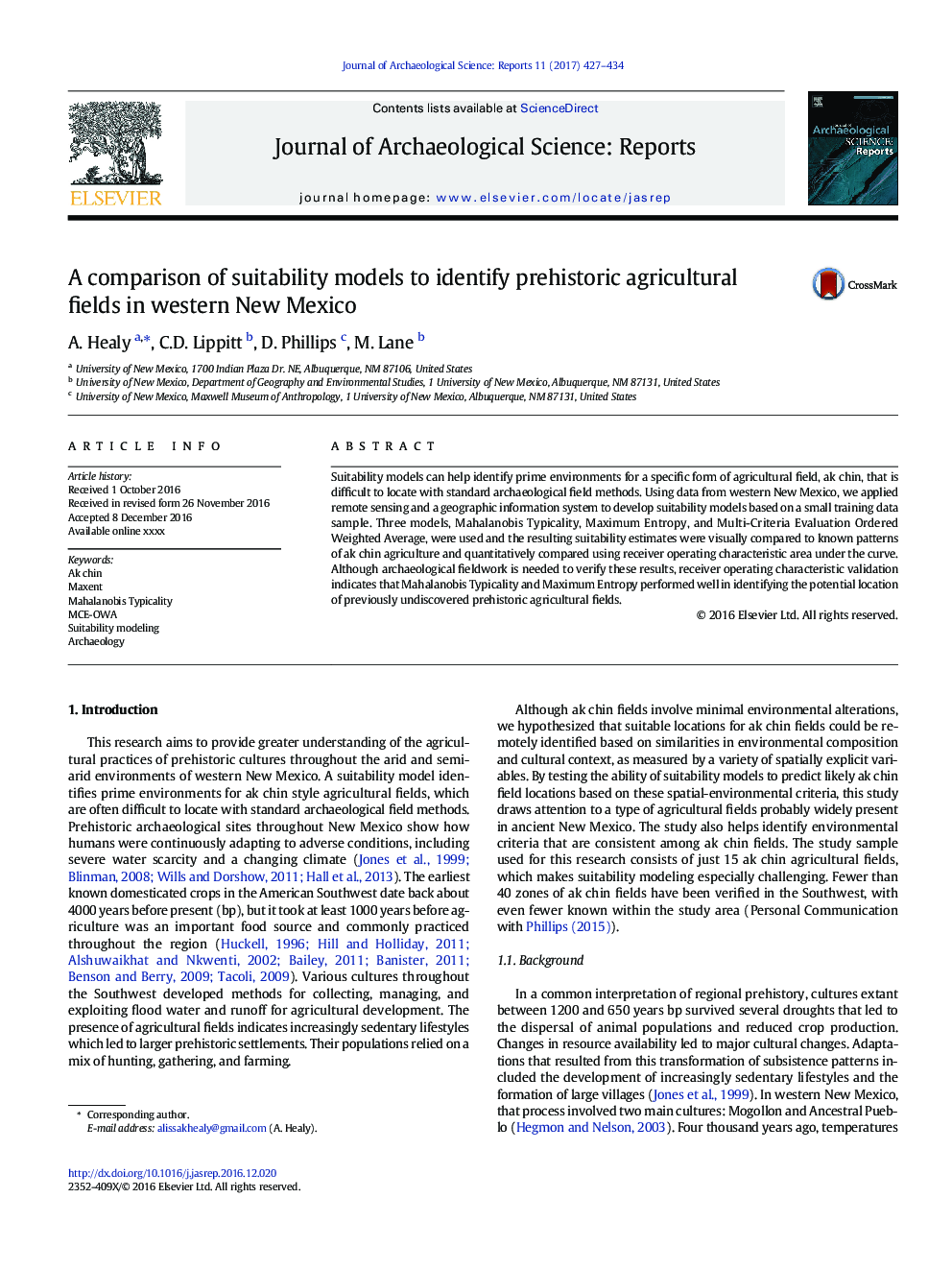| Article ID | Journal | Published Year | Pages | File Type |
|---|---|---|---|---|
| 5112576 | Journal of Archaeological Science: Reports | 2017 | 8 Pages |
Abstract
Suitability models can help identify prime environments for a specific form of agricultural field, ak chin, that is difficult to locate with standard archaeological field methods. Using data from western New Mexico, we applied remote sensing and a geographic information system to develop suitability models based on a small training data sample. Three models, Mahalanobis Typicality, Maximum Entropy, and Multi-Criteria Evaluation Ordered Weighted Average, were used and the resulting suitability estimates were visually compared to known patterns of ak chin agriculture and quantitatively compared using receiver operating characteristic area under the curve. Although archaeological fieldwork is needed to verify these results, receiver operating characteristic validation indicates that Mahalanobis Typicality and Maximum Entropy performed well in identifying the potential location of previously undiscovered prehistoric agricultural fields.
Keywords
Related Topics
Social Sciences and Humanities
Arts and Humanities
History
Authors
A. Healy, C.D. Lippitt, D. Phillips, M. Lane,
